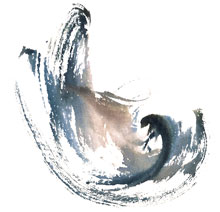
The humanist psychotherapies with experienced guidance were born in the United States in the middle of the fifties at the instigation of In. Maslow, F. Perls, W. Reich, C. Rogers… They are strongly influenced by the existentialists and phenomenological streams : Heidegger, Buber, Sartre, Merleau-Ponty… They have in common to put the human being and his subjective real-life experience in the center of the psychotherapy. It is in himself and by the development of his own resources that the consultant, with the support of the psychopractitioner, fetches the repair answer to his sufferings. To reach there, the humanists streams developed original approaches. Among the most characteristic we find: the emotional approach, the place given to the body, the technics of breathing, the therapeutic touch, the practice of residential seminars…
All these innovative approaches gave birth to various methods of psychotherapy. Among the most known, we find: the gestalt-therapy, the transactional analysis, the psycho-organic analysis, the psychosynthesis, the psychotherapy centered on the person, and more specifically in the field of the body psychotherapy : the bioenergy, the psychotherapeutic postural integration, the biodynamic psychology, the vegetotherapy, the somatotherapy…
